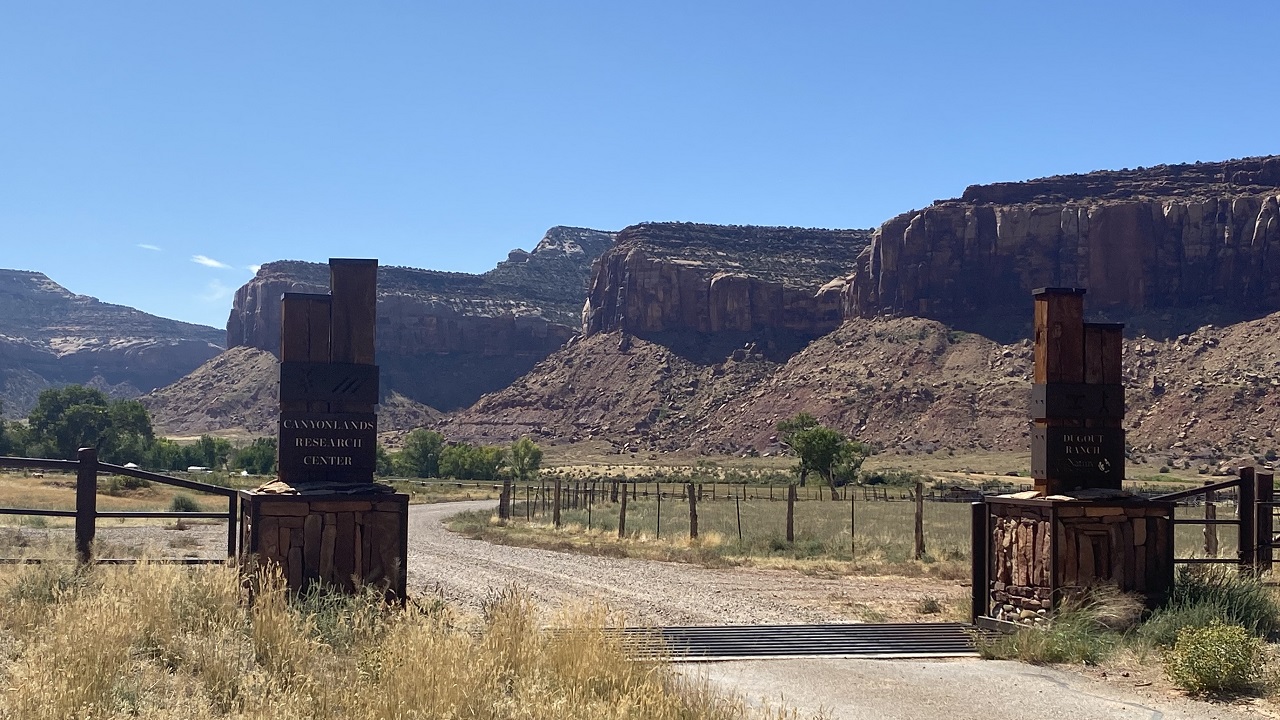MOAB, Utah — Along the beautiful, winding road that connects Moab to the Canyonlands National Park’s ‘Needles’ entrance lies thousands of acres of land known as Dugout Ranch.
“If you saw someone drive past on the highway, you knew who that person was," said Matt Redd. "It was a different time.”
A fifth-generation rancher, Redd and his wife Kristen manage the ranch, which was acquired by the Nature Conservancy about 12 years ago and is now known as the Canyonlands Research Center.
“Arid lands are really important in the world," said Kristen. "There's a lot of agriculture happening on arid lands. People rely on arid lands, and so the Research Center is focused on climate adaptation with agriculture and ranching, but also with restoration practices.”
Professors, like Kari Veblen, and students from schools like Utah State University are researching how ranchers can sustain livestock in a drying climate.
“Grasses, which are our primary forage for cattle, are going to become more scarce," said Veblen. "They're going to be especially vulnerable to drought and to the changing climate.”
This is the only place in Utah where you’ll see Criollo cows, which are smaller than Angus ones and could have a lighter footprint on our land, said Veblen.
“Criollo cattle are a biotype, and they are of cattle that are considered to be more desert-adapted," she said.
Other scientists are using this land to learn how to stop a particularly dangerous weather event that many Utahns are all too familiar with.
“We experience a lot of dust storms," said Matt Bowker, Associate Professor at Northern Arizona University's School of Forestry. "It gets in your eyes, it's bad to breathe the dust. When you have a soil surface that's completely covered and protected by biological crusts, then you're not having that dust getting up in the air into your lungs.”
Bowker and Sasha Reed, a scientist with the U.S. Geological Survey are studying biocrusts at the Research Center. They’ve even learned how to grow them and reintroduce them into degraded landscapes.
“We really want to understand how bio crusts are doing things like stabilizing soil here because we do have so many issues with erosion and dust," said Reed. "We want to see these biocrusts doing what they do, which is gluing this soil together.”
Much of this precious landscape is being continually developed and recreated. The Canyonlands Research Center is working to promote a sustainable future for the natural systems our lives depend on.
“When you come to a place like this, be careful of where you're walking and realize that the soil is alive, and it won't just come back tomorrow if you damage it," said Bowker.




